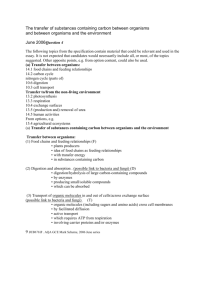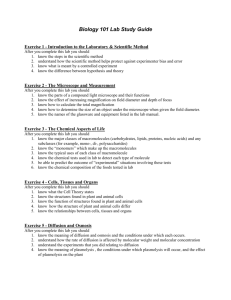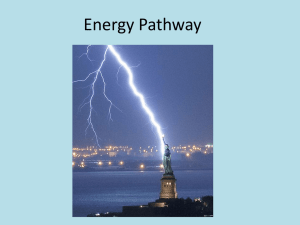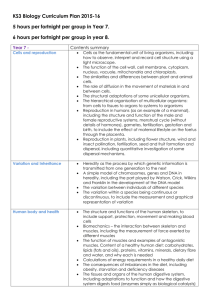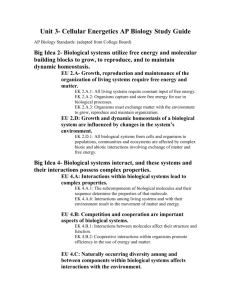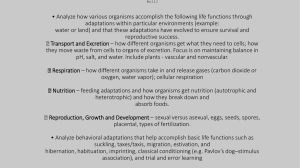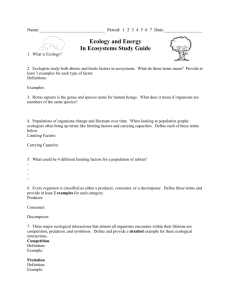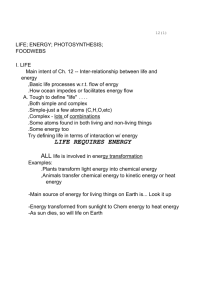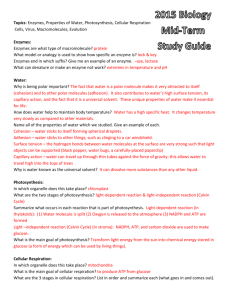Test Review ANSWERS
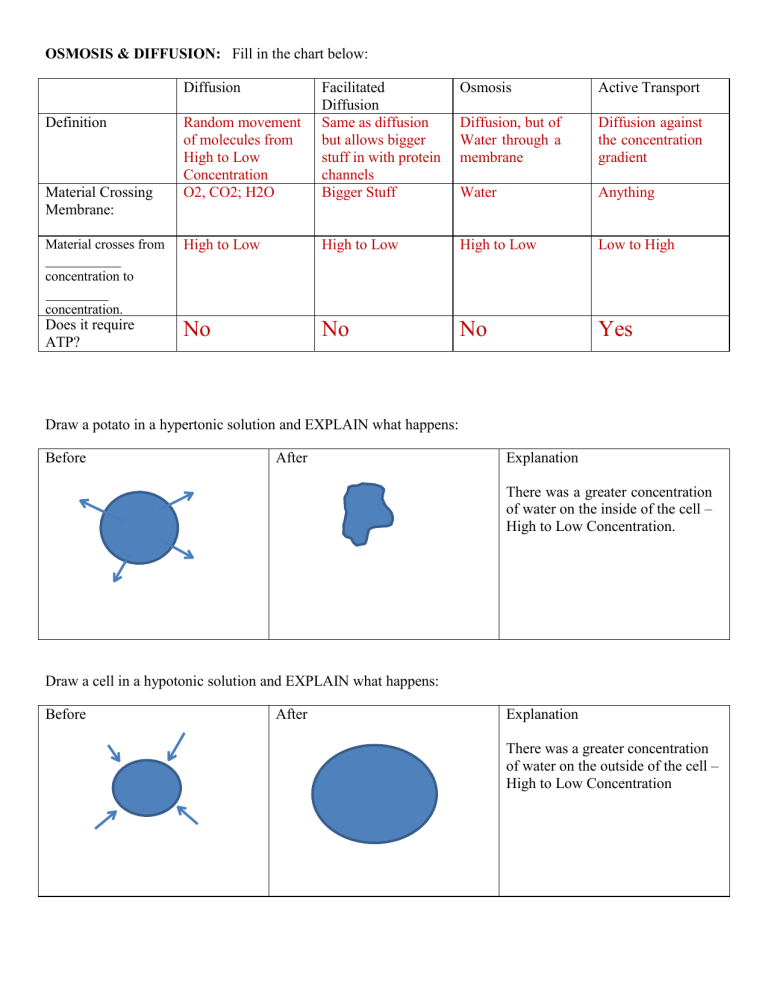
OSMOSIS & DIFFUSION: Fill in the chart below:
Diffusion
Definition
Material Crossing
Membrane:
Random movement of molecules from
High to Low
Concentration
O2, CO2; H2O
Facilitated
Diffusion
Same as diffusion but allows bigger stuff in with protein channels
Bigger Stuff
Osmosis
Diffusion, but of
Water through a membrane
Water
Active Transport
Diffusion against the concentration gradient
Anything
Material crosses from High to Low concentration to
High to Low High to Low Low to High concentration.
Does it require
ATP?
No No
Draw a potato in a hypertonic solution and EXPLAIN what happens:
Before After
No Yes
Explanation
There was a greater concentration of water on the inside of the cell –
High to Low Concentration.
Draw a cell in a hypotonic solution and EXPLAIN what happens:
Before After Explanation
There was a greater concentration of water on the outside of the cell –
High to Low Concentration
Remember that you will need to fill in the blanks on this diagram and be able to explain which ones take energy; if it goes from High to Low or Low to High.
Metabolism Review
Animals have to eat food to both make energy and get nutrients. When animals take in food, it’s called ingestion . When they breakdown the food, it’s called digestion . When they take the food into their cells, it’s called absorption . Since they have to eat other organisms, animals are called heterotrophs . Hetero means “others”, troph means “feeding”, so heterotroph means “feeding on others”.
Some organisms can harvest the energy from the sun and use it to synthesize the molecules and cells of their bodies.
These organisms are plants . The process that allow plants to capture the sun and use it for synthesis is photosynthesis .
Because, in this way, plants make their own food, they are also called autotrophs . Auto means “self”, troph means
“feeding”, so autotroph means “self-feeding”. In photosynthesis, plants take in simple inorganic compounds (CO2 &
H2O) and build organic nutrients such as sugars (C
6
H
12
O
6
)
2.
Autotrophic Nutrition : a.
Organisms take inorganic materials ( H2O & _ CO2 ) and convert them into organic nutrients ( C6H12O6 (Sugar) b.
Auto = self ; troph = feeding
_).
so Autotroph = feed themselves c.
What process do autotrophs use to do this? photosynthesis d.
Examples of organisms that do this: tree; flower; any plant…
3.
Heterotrophic Nutrition : a.
Organisms must EAT b.
Hetero = _; troph = nutrients made by other organisms. so Heterotroph = c.
Examples of organisms that do this: YOU
Photosynthesis: Write the formula for photosynthesis here:
Chemical Formula:
H
2
O + CO
2
_C
6
H
12
O
6
+ O
2
Using words:
Water + carbon dioxide
Photosynthesis is beneficial for many reasons, including:
sugar + oxygen
Provides for all plants and animals
Provides to breathe.
_________________ from atmosphere.
Cellular Respiration: Write the formula below:
Chemical Formula:
+
Using Words:
Sugar (Glucose) + _Oxygen
→ t i h n e . whole foo
+
Carbon Dixoxide_ + _Water ATP
Most organisms carry out aerobic respiration (uses oxygen) in their mitochondria .
Anaerobic respiration does not require oxygen, but gives less ATP (energy) for each molecule of sugar.
When exercise causes human muscles to run out of oxygen, their cells will do anaerobic respiration . The waste product, lactic acid , causes muscles to “burn” so that you will stop .
Homeostasis:
Describe how the transport of materials in and out of cells enables cells to maintain homeostasis. (Think about our online
Paramecium gizmo OR walk around the room and describe how any of those cells maintain homeostasis.)
Draw a cell membrane and label the following parts: phospholipid bilayer. Hydrophilic heads; hydrophobic tails; protein channel.
Hydrophilic Heads Phospholipid bilayer
Hydrophobic Tail
Protein Channel
Cell Components and their functions:
Vacuole = Vacuum (stores stuff) ship) Nucleus = Brain (stores DNA)
Ribosomes = Ribs (makes proteins)
Energy) DNA = your genes
Cell Membrane = Regulate
Golgi Apparatus = UPS store (package and
Lysosome = Digests / Breaks stuff down
Mitochondria = Mighty Mouse (Makes ATP /
Cell Wall = Found in Plants, keeps stuff in & out
Chloroplast = turns suns energy into chemical (photosynthesis)

